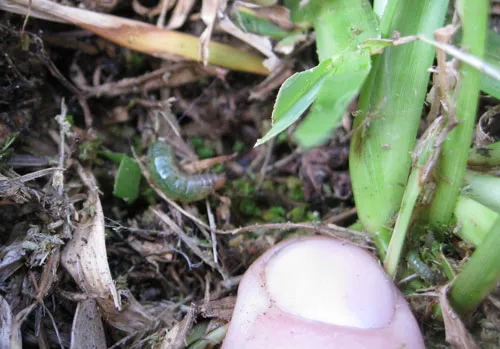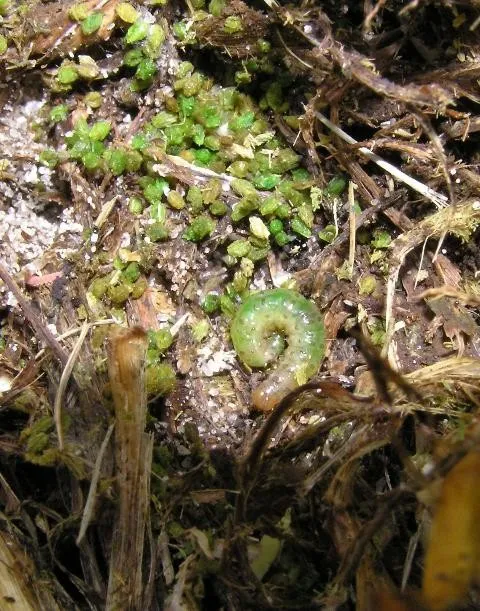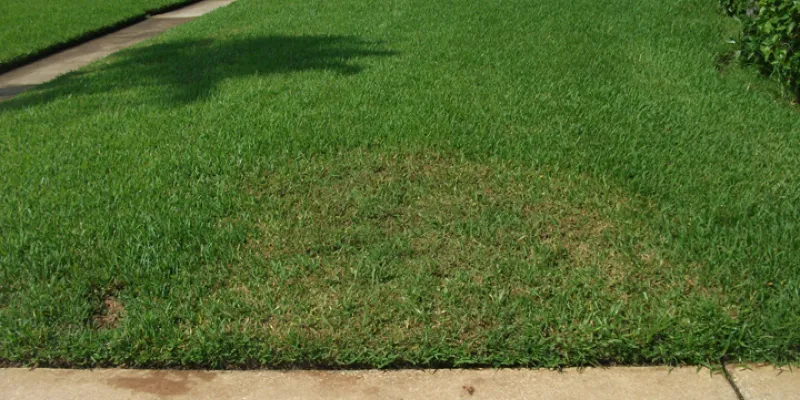When we have extreme weather in Florida, we usually find that a few things really like the conditions. This summer it has been the moths and the 'Tropical Sod Webworm,' which just love the wet yards we've had.
It has been so prolific that our phones have rung with people asking what they are and how to they get rid of them. Perhaps you've seen some fluttering around in your lawn?
How are moths and webworms connected might you ask? Great question! Much like a caterpillar turns into a butterfly, the webworm turns into a moth, and the webworm is what does so much damage to Gainesville lawns.
How do webworms create the brown spots in the lawn? They chew the grass down to the roots as it's primary source of food, causing a similar effect on the lawn as if it were scalped with a weedeater or lawn mower.
The chewed or affected areas typically look like brown circular spots in the lawn that are much shorter than the other parts of the yard, and they typically grow overnight, because that's when the webworms are most active. The round pattern comes from the moth's eggs being laid in one place and the webworms eating out from that initial hatching.
Webworms are known for attacking new sod (hence the name 'tropical sod webworm') due to their high levels of nitrogen in the turf from the sod farms using large amounts of fertilizer. They're also known for attacking shaded areas of lawns due to the moths residing in the trees above the lawn and lving the wet areas to lay their eggs.
What can you do to avoid webworms damaging your lawn?
- Don't set it and forget it - Sometimes modern conveniences like sprinker systems allow us so much peace of mind that they make us think we can eliminte the worry of watering our lawn altogether. However, that really shouldn't be the case. When we experience extreme droughts as we did in March, April, and May of this year, not increasing your sprinkler times to compensate for the higher evaporation (dry air) and lack of rain will cause your lawn to suffer. Similarly, when the rainy season comes as we've experieced in June and July, we have to turn the sprinkler settings way down for the opposite reasons, even if you have a rain sensor. Stressing your lawn with too much or not enough water makes it more susceptible to lawn pests and quicker damage. Sod Webworms are very attracted to overly watered lawns, where the grass is weakened for their dining pleaseure.
- Don't over-fertilize - The reason that Sod webworms are attracted to new sod is because of the amount of fertilizer sod farms use. This is also the case if you use excess fertilizer to attain a "greener" lawn. More often than not, you will instead find yourself with fungal or webworm infestation damaging your lawn. There's nothing wrong with a lawn fertilization plan - as long as whoever you have doing it understands the need to apply the fertilizer correctly and time it for the right seasonal window to avoid lawn pest encouragement.
- An Ounce of Prevention - is worth a pound of cure, according to Ben Franklin. It is also true for your lawn. If you're on our Gainesville lawncare pest program, we use a product that basically immunizes your lawn from webworms, as long as it's watered correctly. As I type this, my lawn is completely infiltrated with moths (my neighbor has a ton of webworm damage) but my lawn is protected because one of our experienced lawn care technicians treated it prior to the moths coming into our neighborhood.
If you do these three things, you can keep your lawn pest-free. If you may have messed up one of the three items above and wonder if you have a webworm problem in your lawn, here are some photos to help you be sure.

The photo above shows grey leaf spot fungus (from over-watering and common when webworms are active) and the webworms' chewed up grass pellets. Also notice the chewed lower edges of the leaf blades.

The photo above shows a sod webworm feeding on a Gainesville lawn (which gives him the translucent green color)

This photo shows an even closer photo of the webworm in the Gainesville lawn with the remnants of his feeding surrounding him (the green pellets of chewed up grass)
Have you noticed your lawn turning brown? or noticed moths fluttering through your lawn? Those are warning signs that the Tropical Sod Webworm is about to feast on your grass.
If you think your Gainesville lawn has pest concerns, please don't hesitate to call or text us at (352) 378-5296 or fill out our online request form. We want to help in any way we can. Below is a video to help you know if you have webworms attacking your Gainesville lawn.


